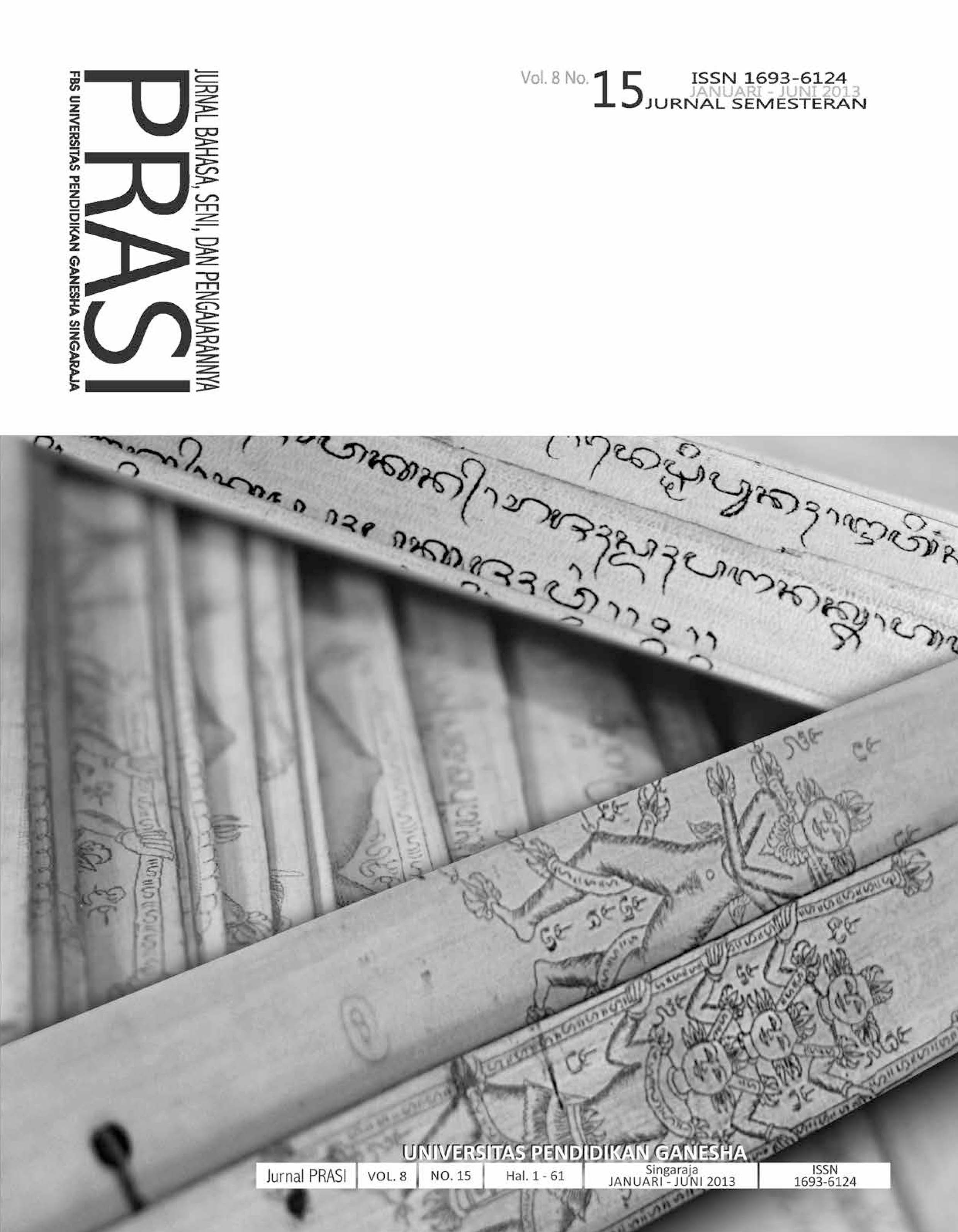STRUKTUR FORMAL DALAM GEGURITAN JAMBE NEGARA
DOI:
https://doi.org/10.23887/prasi.v8i15.8955Abstract
The main objective of this study is to determine the formal structure in Geguritan Jambe Negara, and to contribute to the community in an effort to develop a literary treasures of Bali. This is a descriptive study with the method of observation and literature with the help of recording and translation techniques. Objects in this study is Geguritan Jambe Negara-owned Puri Gede Krambitan Tabanan. Disclosure of the contents of Geguritan Jambe Negara is the formal structure geguritan. In the formal structures of the Geguritan Jambe Negara language code that contains a wide variety of Bali Alus language, and Bali Kasar language Coarse language and style found in Geguritan Jambe Negara is such a style; hyperbole, litotes, oxymoron, eponym, antonomasia. The second result is a distortion in the literary code GJN occurred on the last syllable vocals, and deviations wilaiyin teacher. The deviation is a creative writer to retain the meaning or story in the geguritan.
Keywords: formal structure, geguritan, and literary Bali
Downloads
Published
Issue
Section
License
Authors who publish with Prasi agree to the following terms:- Authors retain copyright and grant the journal the right of first publication with the work simultaneously licensed under a Creative Commons Attribution License (CC BY-SA 4.0) that allows others to share the work with an acknowledgment of the work's authorship and initial publication in this journal
- Authors are able to enter into separate, additional contractual arrangements for the non-exclusive distribution of the journal's published version of the work (e.g., post it to an institutional repository or publish it in a book), with an acknowledgment of its initial publication in this journal.
- Authors are permitted and encouraged to post their work online (e.g., in institutional repositories or on their website) prior to and during the submission process, as it can lead to productive exchanges, as well as earlier and greater citation of published work. (See The Effect of Open Access)


.png)
.png)









